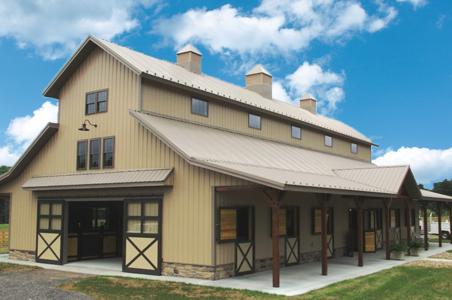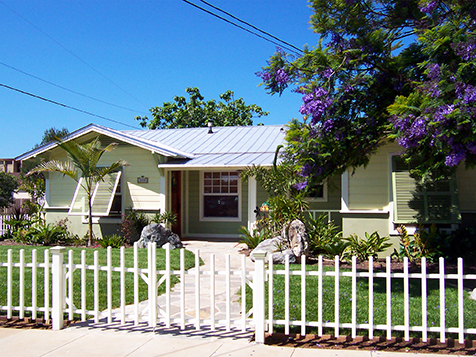There are a variety of factors to consider when selecting metal roofing trim, including the application, roofing style and curb appeal expectations. Once you’ve made your selection, it’s important to ensure that the trim is properly installed to protect your building from water leaks.
Common Metal Roofing Trim
Before jumping into considerations for metal roofing trim selection, here are some of the most common types of metal roofing trim:
● Valley Trim: Used when two roofs are joined together to help drain off rain and snow.
● Transition Flashing: Used for roofs with two different pitches.
● Endwall/Sidewall Flashing: Used for projections that come out of the roof such as dormers, chimneys, lean tos and more.
● Gable Trim: Used to end panels on the roof.
● Eave Trim: Applied where the Fascia board is installed on the low side of the roof.
Metal Roofing Trim Considerations
For consistent performance, it’s ideal to purchase metal roofing trim from the same manufacturer that produced your metal roofing panels. This will extend the life of your roof panel and protect your structure from damage. It will also ensure that the paint systems are compatible. When selecting metal roof trim, look for a heavier gauge material to improve dent resistance. For added protection, look for steel panels that have a Class 4 Hail Rating and a Class A Fire Rating.
Selecting Trim for Your Metal Roof
Roof Style
To select metal roofing trim for your building project, you should examine the roof to determine the metal roofing style. Is it a fastened through or concealed fastener roof? What are your expectations for curb appeal? Do you want a rustic look or a touch of modernity?
Gutters
Consider whether or not your roof will have gutters as this will affect the selection and application of eave trim.
Ridge Caps
Ridge caps are installed on the peak of the roof to help protect against damage from exposure to wind, sun and rain. There are two types of ridge caps to consider for your metal roof: single bend and double bend. Single bend ridge caps are designed for use on homes with roof ventilation materials and provide a clean, modern look.. Double bend ridge caps on the other hand are more durable, making them ideal for post-frame applications.
Roof Overhangs
Do you have overhangs on your roof? For homes and buildings that have ventilation on the eaves, consider adding ventilation material in the peak of the roof . For non-vented overhangs, use a closure to keep out weather and critters.
Roofing Composite
You will need to examine any existing roofing composite materials to determine whether to keep it or remove it. Additional framing material might be needed if installing panels over the existing roof. This will affect the selection of gable and eave trims.
To learn more about how to select metal roofing trim, reach out to your local ABC representative.
Why Choose ABC
At ABC, we offer a wide variety of trim to accommodate most applications. If none of our standard trim offerings fit your project, we can manufacture custom trim designed to fit your unique specifications. We offer a broad color palette for our metal roof panels, trim and gutter systems so you can create eye-catching curb appeal.
Browse our selection of metal roofing trim or contact a sales representative today.








